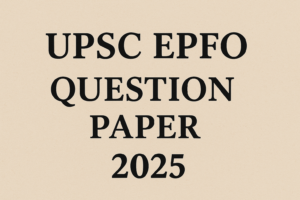Q2. Examine the main aspects of Akbar’s religious syncretism.
| Approach |
| Begin with Akbar’s inclusive vision of governance. Explain Sulh-i-Kul, abolition of jizya and pilgrimage tax, interfaith dialogues at Ibadat Khana, and the creation of Din-i-Ilahi. Highlight cultural integration through Rajput alliances, translations of Hindu epics, and syncretic architecture. Conclude with his contribution to composite Indian culture. |
Akbar’s religious policy was marked by a conscious departure from orthodoxy and an attempt to create a tolerant, pluralist framework for governance. Guided by the principle of Sulh-i-Kul (peace with all), his measures reflected both political pragmatism and spiritual curiosity, making him unique among medieval rulers.
Main Aspects
- Sulh-i-Kul (Peace with All): Enunciated by Abul Fazl, it institutionalised tolerance and equality across faiths, reducing clerical dominance.
- Abolition of Discriminatory Taxes: Pilgrimage tax (1563) and jizya (1564) were removed, eliminating key symbols of Muslim superiority over Hindus.
- Ibadat Khana Dialogues: Initiated at Fatehpur Sikri, these interfaith discussions projected Akbar as a supra-sectarian arbiter and undermined ulema authority.
- Mahzar (1579): Declared Akbar the supreme authority in religious disputes, strengthening imperial sovereignty.
- Din-i-Ilahi (1582): A syncretic spiritual order emphasising loyalty, ethics, and piety; though followed by few, it symbolised his quest for unity.
- Rajput Alliances: Matrimonial and political partnerships (e.g., Raja Man Singh) integrated Hindu elites, stabilising frontiers and embedding cultural pluralism.
- Cultural Patronage: Persian translations of the Mahabharata (Razmnama) and Ramayana, the Indo-Islamic synthesis at Fatehpur Sikri, Mughal painting, and Tansen’s music embodied cultural syncretism.
- Respect for Other Traditions: Honoured Jain monks, banned cow slaughter on Jain festivals, adopted Tarikh-i-Ilahi calendar, and integrated Zoroastrian rituals.
Analysis of Akbar’s Religious Policy
- Political: Consolidated empire by co-opting diverse elites and curbing ulema.
- Economic: Ensured agrarian stability and wider compliance in revenue collection.
- Social: Elite-driven inclusivity succeeded, but mass religiosity remained largely untouched.
- Ideological: Abul Fazl praised Akbar as philosopher-king; Badauni condemned his policies as heretical.
- Comparative: Akbar attempted fusion; unlike Europe’s Reformation conflicts, India tilted toward coexistence.
Conclusion
Akbar’s religious policy went beyond expediency to articulate a new vision of sovereignty based on tolerance. While Din-i-Ilahi failed, the principle of Sulh-i-Kul endured, embedding pluralism into Mughal governance and shaping the foundations of India’s composite culture.

 UPSC EPFO Answer Key 2025 Out (Unofficia...
UPSC EPFO Answer Key 2025 Out (Unofficia...
 UPSC EPFO Question Paper 2025 PDF Downlo...
UPSC EPFO Question Paper 2025 PDF Downlo...
 UPSC EPFO Admit Card 2025 Out @ upsc.gov...
UPSC EPFO Admit Card 2025 Out @ upsc.gov...

























